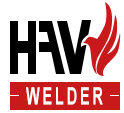 English
English-
 English
English -
 Español
Español -
 Português
Português -
 русский
русский -
 Français
Français -
 日本語
日本語 -
 Deutsch
Deutsch -
 tiếng Việt
tiếng Việt -
 Italiano
Italiano -
 Nederlands
Nederlands -
 ภาษาไทย
ภาษาไทย -
 Polski
Polski -
 한국어
한국어 -
 Svenska
Svenska -
 magyar
magyar -
 Malay
Malay -
 বাংলা ভাষার
বাংলা ভাষার -
 Dansk
Dansk -
 Suomi
Suomi -
 हिन्दी
हिन्दी -
 Pilipino
Pilipino -
 Türkçe
Türkçe -
 Gaeilge
Gaeilge -
 العربية
العربية -
 Indonesia
Indonesia -
 Norsk
Norsk -
 تمل
تمل -
 český
český -
 ελληνικά
ελληνικά -
 український
український -
 Javanese
Javanese -
 فارسی
فارسی -
 தமிழ்
தமிழ் -
 తెలుగు
తెలుగు -
 नेपाली
नेपाली -
 Burmese
Burmese -
 български
български -
 ລາວ
ລາວ -
 Latine
Latine -
 Қазақша
Қазақша -
 Euskal
Euskal -
 Azərbaycan
Azərbaycan -
 Slovenský jazyk
Slovenský jazyk -
 Македонски
Македонски -
 Lietuvos
Lietuvos -
 Eesti Keel
Eesti Keel -
 Română
Română -
 Slovenski
Slovenski -
 मराठी
मराठी -
 Srpski језик
Srpski језик
MMAW (Manual Metal Arc Welding)
2024-04-26
Summary:
Manual arc welding is a type of metal arc welding that does not utilize shielding gas. In this manual welding process, an electrode with a coated flux layer is used. The electrode serves as both the carrier of the arc and the filler material, preventing atmospheric contamination. Both the protection against the atmosphere and the flux layer's generation of slag or shielding gases come from the electrode itself. The outer flux layer creates slag and/or generates shielding gases, which safeguard the transitioning molten droplets and weld pool from the intrusion of oxygen, nitrogen, and hydrogen present in the atmosphere.
Current type:
Manual arc welding can be performed using both direct current (DC) and alternating current (AC). Most types of welding electrodes are used with DC current, where the electrode is connected to the negative polarity and the workpiece is connected to the positive polarity. However, when using alkaline electrodes, better welding results can be achieved with the workpiece connected to the positive polarity. Some brands of cellulose-type electrodes are also designed for positive polarity welding.
Please note that the listed AWS classifications are commonly used internationally. However, specific regional or country-specific standards and classifications may exist. It is important to refer to the relevant international standards and specifications when selecting and using welding electrodes.
| Welding Electrode | AWS Classification | Application |
| E6010 | AWS E6010 | General purpose for carbon and low-alloy steels |
| E7018 | AWS E7018 | Low hydrogen electrode for high load and critical structures |
| E7016 | AWS E7016 | Medium slag electrode for carbon and low-alloy steels |
| E308 | AWS E308 | Basic stainless steel electrode for joining stainless steel and carbon steel |
| E309 | AWS E309 | Basic stainless steel electrode for joining stainless steel and low-alloy or carbon steel |
| Welding Electrode | AWS Classification | Application |
| E6013 | AWS E6013 | General purpose for carbon and low-alloy steels |
| E7014 | AWS E7014 | Medium slag electrode for carbon and low-alloy steels |
| E6011 | AWS E6011 | General purpose with good penetration for carbon and low-alloy steels |
| E7018-A1 | AWS E7018-A1 | Low hydrogen electrode for high-strength and high-load structures |
Types of Welding Electrodes:
The flux coating on welding electrodes can be classified into different categories, and their compositions can vary significantly. The composition of the flux coating determines the melting characteristics, welding performance, and strength of the weld joint. For welding electrodes used with non-alloy steels, there are different types of flux coatings, including basic types and mixed types. The abbreviations used in the classification are derived from the corresponding English terms. Specifically, C stands for cellulose, A for acid, R for rutile, and B for basic. When it comes to welding electrodes for stainless steel, there are only two types available: rutile and basic.
| Welding Electrode Diameter (mm) | Recommended Welding Current (A) |
| 2 | 40-80 |
| 2.5 | 50-100 |
| 3.2 | 90-150 |
| 4 | 120-200 |
| 5 | 180-270 |
| 6 | 220-360 |



